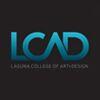Otis College of Art and Design (OTIS) was established in 1918 by founder and publisher of the Los Angeles Times General Harrison Gray Otis. Serving approximately 1,100 full-time students, OTIS is a private nonprofit institution and national leader in art and design education. “Alumni and faculty are Fulbright, MacArthur, and Guggenheim grant recipients, Oscar awardees, legendary costume designers, leaders of contemporary art movements, entrepreneurs, and design stars at Apple, Abercrombie & Fitch, Pixar, DreamWorks, Mattel, Nike, and Disney,” says the school.
OTIS offers 11 BFA degree programs including Architecture/Landscape/Interiors, Digital Media (Animation, Game and Entertainment Design, and Motion Design), Fashion Design, Communication Arts (Graphic Design, and Illustration), Fine Arts (Painting, Photography, and Sculpture/New Genres), Product Design, and Toy Design. OTIS also awards an MFA degree in Fine Arts, Graphic Design, Public Practice, and Writing, as well as a variety of minors and certificate programs.
The BFA in Graphic Design is offered through the Communication Arts Department. A Minor in Advertising Design and a Graphic Design Certificate are also available. Formats covered in the BFA Graphic Design Program include branding and logo development, posters, books, package design, apps, websites, and interactive design. Students in the program “learn to articulate a critical and theoretical perspective and develop graphic design skills, such as type design and traditional letterpress,” says the school. “Strong craft and presentation skills are emphasized throughout,” with students achieving “the highest level of design excellence through critiques, reviews, and workshops.”
Course highlights for the program include Advanced Image Making Projects, Communication Studio I-IV, Connections through Color and Design, Creative Action Studio, Drawing and Building Form, Systems and Identity Design, Type and Alternative Media, Typography, Visual Language, and Writing in the Digital Age. A Senior Thesis/Research Paper, Senior Project/Seminar, and Capstone are also part of the program.
The MFA in Graphic Design is an accelerated LA-based program that takes 14 months to complete. During the program, students learn to work across media and platforms through a series of visiting workshops, courses in design theory and history, studio projects, and round table discussions. “The coursework engages research, discourse, critical thinking, and iterative process with the goal of discovering many possible design outcomes. In so doing, the program supports students in taking on the challenges and opportunities in contemporary graphic design practice.”
Graduates of the Graphic Design programs at OTIS have landed positions at major companies and studios such as ABC, Inc. and Partners, Apple, Anthropologie, Capitol Records, Conde Nast Publications, Disney Consumer Products, GUESS?, Metro-Goldwyn-Mayer, Ogilvy Worldwide, Sony Music, Twentieth Century Fox, Warner Bros. Records, and Young & Rubicam.
Otis College of Art and Design (OTIS) was established in 1918 by founder and publisher of the Los Angeles Times General Harrison Gray Otis. Serving approximately 1,100 full-time students, OTIS is a private nonprofit institution and national leader in art and design education. “Alumni and faculty are Fulbright, MacArthur, and Guggenheim grant recipients, Oscar awardees, legendary costume designers, leaders of contemporary art movements, entrepreneurs, and design stars at Apple, Abercrombie & Fitch, Pixar, DreamWorks, Mattel, Nike, and Disney,” says the school.
OTIS offers 11 BFA degree programs including Architecture/Landscape/Interiors, Digital Media (Animation, Game and Entertainment Design, and Motion Design), Fashion Design, Communication Arts (Graphic Design, and Illustration), Fine Arts (Painting, Photography, and Sculpture/New Genres), Product Design, and Toy Design. OTIS also awards an MFA degree in Fine Arts, Graphic Design, Public Practice, and Writing, as well as a variety of minors and certificate programs.
The BFA in Graphic Design is offered through the Communication Arts Department. A Minor in Advertising Design and a Graphic Design Certificate are also available. Formats covered in the BFA Graphic Design Program include branding and logo development, posters, books, package design, apps, websites, and interactive design. Students in the program “learn to articulate a critical and theoretical perspective and develop graphic design skills, such as type design and traditional letterpress,” says the school. “Strong craft and presentation skills are emphasized throughout,” with students achieving “the highest level of design excellence through critiques, reviews, and workshops.”
Course highlights for the program include Advanced Image Making Projects, Communication Studio I-IV, Connections through Color and Design, Creative Action Studio, Drawing and Building Form, Systems and Identity Design, Type and Alternative Media, Typography, Visual Language, and Writing in the Digital Age. A Senior Thesis/Research Paper, Senior Project/Seminar, and Capstone are also part of the program.
The MFA in Graphic Design is an accelerated LA-based program that takes 14 months to complete. During the program, students learn to work across media and platforms through a series of visiting workshops, courses in design theory and history, studio projects, and round table discussions. “The coursework engages research, discourse, critical thinking, and iterative process with the goal of discovering many possible design outcomes. In so doing, the program supports students in taking on the challenges and opportunities in contemporary graphic design practice.”
Graduates of the Graphic Design programs at OTIS have landed positions at major companies and studios such as ABC, Inc. and Partners, Apple, Anthropologie, Capitol Records, Conde Nast Publications, Disney Consumer Products, GUESS?, Metro-Goldwyn-Mayer, Ogilvy Worldwide, Sony Music, Twentieth Century Fox, Warner Bros. Records, and Young & Rubicam.






















